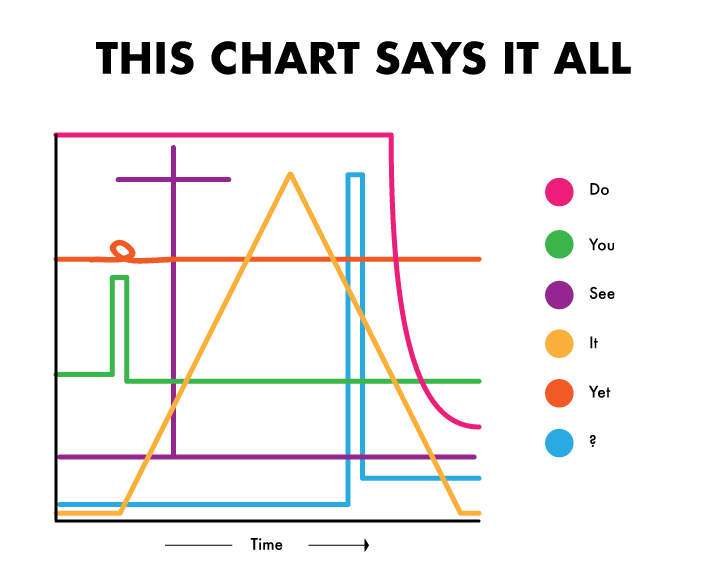
Algebra 2 by Richard Wright
Are you not my student and
has this helped you?
Objectives:
SDA NAD Content Standards (2018): AII.4.1, AII.6.1

Solving by graphing has problems. A couple of these are that graphing takes a long time and it is not always accurate so the solution is estimated. Conveniently, there are two algebraic methods that can be used to solve a system of linear equations exactly: substitution and elimination.
Substitution involves replacing a variable in an equation with an expression or value that it equals. This is a general method and works all the time.
To solve a system by substitution,
Solve \(\left\{ \begin{align} 2x+5y=-5 \\ x=3-3y \end{align} \right.\).
Solution
Equation 2 is solved for x already.
x = 3 − 3y
Substitute this into the first equation.
2x + 5y = −5
2(3 − 3y) + 5y = −5
Distribute.
6 - 6y + 5y = −5
Combine like terms and solve for y.
6 − y = −5
−y = −11
y = 11
Substitute that back into 1st equation.
x = 3 − 3y
x = 3 − 3(11) = −30
The solution is (−30, 11).
Solve \(\left\{ \begin{align} 3x+2y=1 \\ y=2x+4 \end{align} \right.\).
Answer
The solution is (−1, 2).
Solve \(\left\{ \begin{align} x-2y & =4 \\ 3x-6y & = 9 \end{align} \right.\).
Solution
Solve the 1st equation for x.
x − 2y = 4
x = 2y + 4
Substitute this into the other equation.
3x − 6y = 8
3(2y + 4) − 6y = 8
Distribute the 3 and solve for y.
6y + 12 − 6y = 8
12 = 8
Notice that all the y's disappeared. Look at the equation 12 = 8. This is never true. That means there is no solution.
A system of equations has no solution or infinitely many solutions if all the variables disappear while solving and what remains is a
Solve \(\left\{ \begin{align} x-y & =4 \\ -6x+6y & =-24 \end{align} \right.\).
Answer
All the variables disappeared and −24 = −24, so infinitely many solutions.
Substitution works all the time, but there are some short comings. For example, if none of the equations have a lone variable, then you will be working with fractions. Most people prefer not to deal with fractions if possible. The other method is elimination, but it only works for linear equations.
To solve by elimination,
Solve \(\left\{ \begin{align} 3x-7y & =10 \\ 6x-8y & =8 \end{align} \right.\).
Solution
Notice that multiplying the 3x by −2 will produce −6x in the top equation and 6x in the bottom equation.
$$ \left\{ \begin{align} \color{red}{-2}\left(3x-7y\right) & = \color{red}{-2}\left(10\right) \\ 6x-8y & =8 \end{align} \right. $$
$$ \left\{ \begin{align} -6x+14y & =-20 \\ 6x-8y & =8 \end{align} \right. $$
Add the equations.
6y = −12
y = −2
Substitute this into one of the original equations.
3x − 7y = 10
3x − 7(−2) = 10
3x + 14 = 10
3x = −4
$$ x = -\frac{4}{3} $$
The solution is \(\left(-\frac{4}{3}, -2\right)\).
Solve \(\left\{ \begin{align} 8x+2y & =4 \\ -2x+3y & =13 \end{align} \right. \).
Answer
The solution is \(\left(-\frac{1}{2}, 4\right)\).
Solve \(\left\{ \begin{align} 2x-3y & =8 \\ 3x+4y & =-5 \end{align} \right.\).
Solution
Neither x or y are convenient, so choose one. This example will use x.
Multiply the 1st equation by 3 and the 2nd equation by −2 to get 6x and −6x.
$$ \left\{ \begin{align} \color{red}{3}\left(2x-3y\right) & =\color{red}{3}\left(8\right) \\ \color{red}{-2}\left(3x+4y\right) & =\color{red}{-2}\left(-5\right) \end{align} \right. $$
$$ \left\{ \begin{align} 6x-9y & =24 \\ -6x-8y & =10 \end{align} \right. $$
Add the equation together.
−17y = 34
y = −2
Substitute this into one of the original equations.
2x − 3y = 8
2x − 3(−2) = 8
2x = 2
x = 1
The solution is (1, −2).
Solve \(\left\{ \begin{align} 4x-2y & =8 \\ 3x-7y & =-5 \end{align} \right.\).
Answer
The solution is (3, 2).
Solve \(\left\{ \begin{align} 4x-6y & =10 \\ -6x+9y & =-9 \end{align} \right.\).
Solution
Multiply the 1st equation by 3 and the 2nd equation by 2 to get 12x and −12x.
$$ \left\{ \begin{align} \color{red}{3}\left(4x-6y\right) & =\color{red}{3}\left(10\right) \\ \color{red}{2}\left(-6x+9y\right) & =\color{red}{2}\left(-9\right) \end{align} \right. $$
$$ \left\{ \begin{align} 12x-18y & =30 \\ -12x+18y & =-18 \end{align} \right. $$
Add the equations together.
0 = 12
All the variables disappeared and false statement, so there is no solution.
Solve the system using substitution.
Solve the system using elimination.
Problem Solving

Mixed Review
